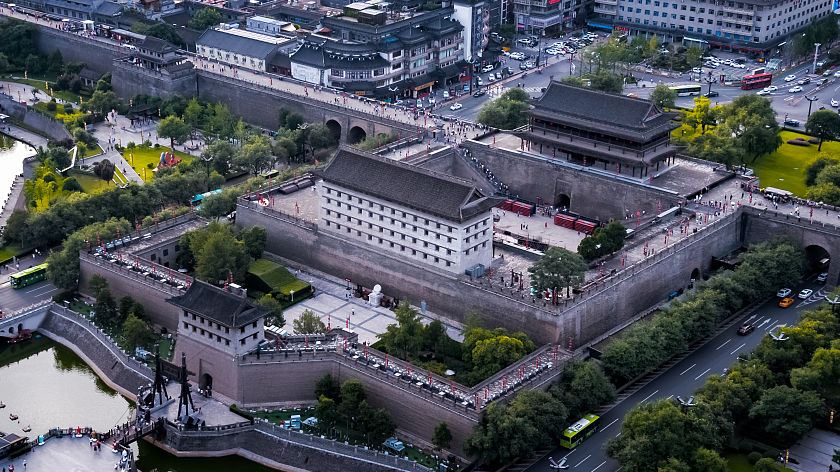
An aerial view of part of Xi'an ancient city walls in northwest China's Shaanxi Province. /CFP
An aerial view of part of Xi'an ancient city walls in northwest China's Shaanxi Province. /CFP
A research team recently completed a "physical check" on the over 600-year-old Xi'an ancient city walls in northwest China's Shaanxi Province. The check was aided by the use of high-energy cosmic ray particles, and all of the relics were kept intact throughout the process.
This high-tech scan was carried out by China's first homegrown non-destructive imaging system of cosmic ray muons based upon a plastic scintillator.
With six observation points set at the 58th section protruding from the outer walls, the equipment was able to collect data and obtain images of the interior via the system. This method allows for the detection of any possible damage inside the walls, said Liu Zhiyi, a professor from Lanzhou University, who leads the research team.
"This is the first domestic application of the muons imaging system in the field of cultural relics protection," Liu said, adding that his team is also preparing for possible cooperation with cultural relics preservation departments across the country, including those in charge of Maiji Mountain Grottoes and Mogao Grottoes in Gansu Province.
Xi'an boasts one of China's most well-preserved ancient city walls. It is of great value in studying urban construction, history, culture, military defense and architecture in ancient Chinese society. However, after hundreds of years, some parts of the walls have sunk or collapsed. Some of the lesions are embedded deep in the wall, posing more challenges for archaeological conservators in relic detection and restoration.
Similar muons imaging technologies have long been adopted in international archaeology. As early as 2017, a joint research team scanned Egypt's Great Pyramid of Giza, widely known as Khufu Pyramid. The scans revealed a newly discovered 30-meter-long void space, believed to be a secret chamber that may help reveal how the great ancient monument was built.
Source(s): Xinhua News Agency